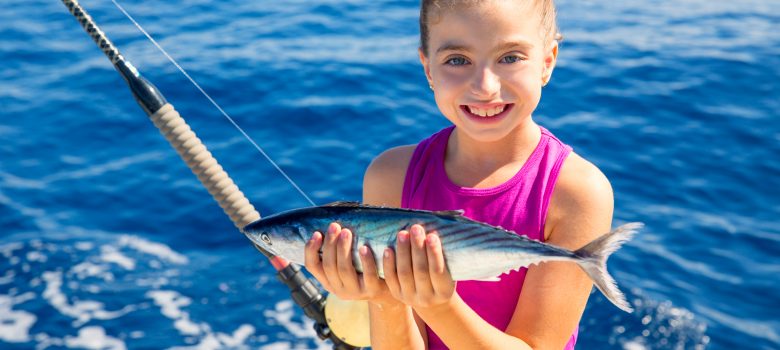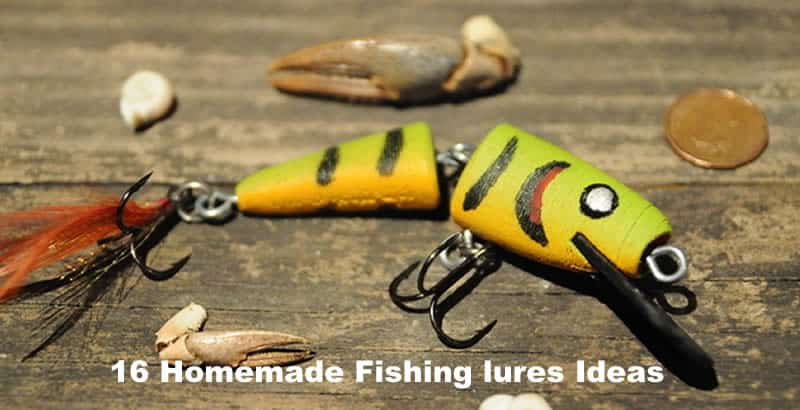If you buy via a link on this page, we may receive a commission, at no extra cost to you.Learn more
Bonitos are definitely not your average fish. This cousin of the tuna is a fierce predator and is referred to by some as a “trash fish” and mainly used as bait. And yet, many people find Bonito fish absolutely delicious.
Are Bonito fish good to eat? Bonito fish are safe to eat, but because of the strong, harsh flavor and oily texture, it isn’t a taste that is accepted by all.
Many people have speculated whether or not it is safe to consume bonito fish. You should be aware that Bonito fish do indeed have a taste that is unlike any other.

Though the taste is highly unusual, it is still perfectly fine to eat, should you be lucky enough to catch one. Let’s start with the basics – and progress to recipes!
What Are Bonito Fish?
These fish belong to the Scombridae family, and they include other fish such as mackerel and tuna. They only live in areas that contain saltwater and are certainly not one of the common species that you usually see at markets. Bonito possess a unique texture and taste that is different from other species.
What are the Different Types of Bonito Fish?
These fish are the only ones of their kind within the Scombridae family, and there are not yet any known classes other than these. However, if you’re a novice, you may confuse tuna and Bonito. The fishing industry typically categorizes them by age and region:
Young: These are small with meat that is fairly pink and light. Compared to the old ones, they don’t contain as much fat.
Old: Possesses very dark and firm meat. In many cases, the fat content is moderate.
Regional: These types are only known by their region which is either the Atlantic or Australian
With more experience, you may be able to start telling them apart, but the universal rule is that the smaller ones are younger because they don’t have much fat, and their meat will be more tender.
Bonito Characteristics
The Bonito is so unique that it has very distinct characteristics even though it is still often mistaken for tuna:
- Bonito are ray-finned. They have rays on the tips of their fins so they can guard themselves and intimidate
- Have an aggressive nature. They are hard to catch, and they pick fights.
- They have an oval shape; this aids them in their swimming
- Bonito are predators themselves and will eat small fish species like sardines.
- Bonito can swim very long distances.
- They swim in large schools because of their social nature, and many times you will find them near shores.
How to Catch Bonito
Bonito fish is a popular species for anglers due to their strong and aggressive nature. They are often found in large schools near the surface of the water, making them relatively easy to catch. If you’re looking to add bonito to your catch, here are some tips on how to do it.
ALSO READ:
Best Saltwater Fishing Lures
Best Saltwater Baitcasting Reels
Choose the right equipment
Bonito are known for their powerful runs, so it’s important to use a rod and reel that can handle the fight. Look for a rod with fast action and a reel with a strong drag system. A braided line or fluorocarbon leader can also be helpful for added strength and sensitivity.
Use the right bait
Bonito are opportunistic feeders and will eat a variety of small fish and crustaceans. Live bait such as sardines or pilchards can be particularly effective, but frozen bait can also work well. Chumming can also be a useful technique for attracting bonito to your area.
Target the right location
Bonito can be found in a variety of locations, but they are most commonly found near the surface of the water in large schools. Look for areas with structures such as reefs or drop-offs, as well as areas with baitfish or birds feeding on the surface.
Use the right techniques
Trolling is a popular method for catching bonito, as it allows you to cover a large area and attract the attention of the fish. Casting and retrieving lures or flies can also be effective, especially if you are targeting bonito in shallow water.
Be prepared for the fight
Bonito are known for their strong runs and acrobatic jumps, so be prepared for a thrilling fight when you hook one. Use a strong and steady retrieve to tire out the fish, and be sure to use a landing net to safely release the fish after it is caught.
By following these tips, you can increase your chances of landing a bonito on your next fishing trip. With their delicious taste and versatile nature, bonito is a great addition to any angler’s catch.
What Does Bonito Taste Like?
Some have described Bonito as a cross between tuna and mackerel. The flesh will not be quite as dense as tuna, and it will have a much oilier and fatter flavor in addition. When paired with stronger flavors, Bonito will taste particularly well just like in the Balkans and Spain.
Depending on the type of Bonito, it can also vary. Smaller and younger Bonito have flesh that is like skipjack tuna; it will be lighter in taste as well as color.
It’s usually a good idea to bleed these fish right after you catch them because the flavor will be improved dramatically, also make sure you have lots of ice on hand because they will spoil quickly.
- Some cultures consider Bonito a tasty delicacy. The general census is that Bonito tastes its best when it’s grilled.
- In places such as Turkey and the Balkans, young Bonito is usually preserved and then served alongside some sliced red onions as snacks to go with socializing and drinking.
Once you cook Bonito for yourself at least one time, you may also consider it a delicacy.
How Can I Cook Bonito?
There isn’t really anything more complicated to cooking Bonito than other fish. Whether you’re grilling, baking, or frying, it really all comes down to your own preference.
Grilling
When grilling, you need to clean the Bonito and get rid of all the skin, including the gut. Cut everything into nice slices and season the slices with oregano, salt, and garlic. Next, allow it to marinate for about an hour, heat up the grill, and cook the Bonito up for another hour before you serve it nice and hot.
Baking
Make sure the Bonito is cleaned and cut into large portions. Sprinkle a little bit of lemon juice, and olive oil, and season the result with pepper and salt. Oil the baking pan while you preheat the oven to around 450 degrees Fahrenheit. Bake the fish for 9-11 minutes.
Frying
When frying your Bonito, you can fry it as you would any other fish; just remember to get rid of the gut and skin before you season it to fit your tastes.
Marmitako: a Recipe Featuring Bonito

This is a take on the Spanish version that utilizes tuna instead of Bonito. The result of this recipe is a thick warm stew that is ideal in the springtime, expect Spanish flavors to waft across your dining table.
Time to prepare: About 45 minutes
Ingredients
1 pound of fresh Bonito fillet
2 dried ancho chiles or dried pepper
Coarse salt
⅓ cup of olive oil
4 russet potatoes that total 2 pounds in weight
1 clove garlic, minced
1 yellow onion that is chopped finely
1 tablespoon of sweet paprika or pimento
½ green bell pepper seeded, cut it lengthwise for narrow strips.
Here are the steps to prepare:
- Rehydrate the dried chiles. Use a bowl that can take lots of heat and cover the dried chiles with boiling water
- Let this stand for about 30 minutes.
- Dump the water and cut the chiles open, scrape off all the flesh with a knife and discard the stems, skins, and seeds.
- Set aside the flesh for the moment
- Cut the Bonito into pieces and sprinkle it with some coarse salt
- Peel the potatoes and make a small cut within each potato, break it open without cutting it in half. Set the potato pieces to the side.
- Using a stockpot, heat up the olive oil on medium-high heat.
- Add the vegetables and chile flesh. Saute this for about 5 minutes on medium-low heat or until the bell pepper and onion have started to soften, and the onion is becoming translucent.
- Add the pimento and potatoes to mix well. Season this with coarse salt and add water to cover all the contents by 2 inches.
- Bring this to a boil and decrease to medium-low heat, cook for 30 minutes, or until potatoes are tender enough for a fork.
- Now you can add the Bonito pieces to the pot and let them simmer for 5 minutes or until you see the fish becoming opaque.
- Take the bowl from the heat and let it stand for about 30 minutes before you serve them.
- Reheat carefully to a comfortable temperature and ladle the stew into some warm bowls.
The Takeaway
There are many ways to optimize the taste of Bonito, even if you’re afraid of not liking it. At the very least you should give this exotic fish a try since you won’t be able to taste anything like it anywhere else you go.
If you find that you just can’t do it because it’s just too different for you, then you can always use it as bait.




